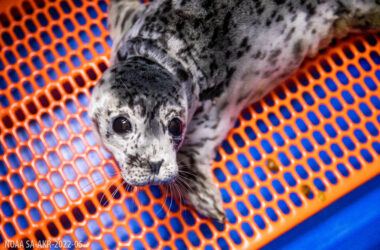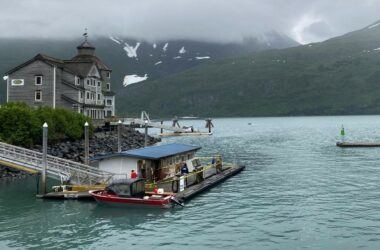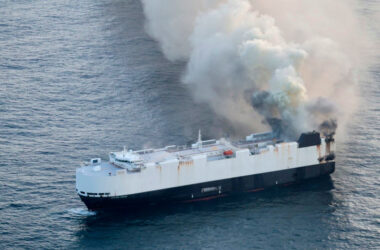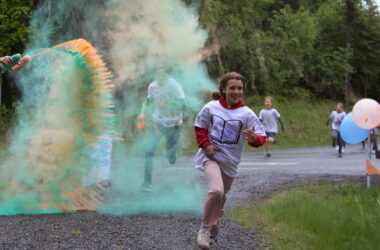Alaska Wildlife Alliance (AWA) and Kenai Peninsula College, in collaboration with the City of Kenai, have launched two beluga viewing cameras at the mouth of the Kenai River. The cameras provide an opportunity to increase public awareness and knowledge about the belugas’ use of the river, all from the comfort of their homes or phones.
The camera live streams are available at https://www.youtube.com/@alaskawildlifealliance/streams.
“We were looking for another way to verify that belugas had come into the river,” said AWA Kenai Peninsula Coordinator Teresa Becher. “So, to bring more awareness to the belugas, but also to have a better understanding of when they’re coming in.”
The AWA worked with the City of Kenai, using video monitoring systems already in place to bring the beluga cameras online. “They have some experience with all of this and helped us get it all set up, and we put it out live right around Thanksgiving,” said Becher.
Becher says the cameras, also in collaboration with Kenai Peninsula College, will allow the study of beluga behavior in the marine mammals’ natural habitat.
“We partnered with Kenai Peninsula College and specifically Doctor Debbie Tobin out of the Homer,” Becher explained. “Her students could then help us watch them, you know, say, for example, this semester for some other form of research where they were trying to figure out the behavior of the belugas.”
Cook Inlet beluga whales – known as the “canaries of the sea” because of the many different sounds they make – are critically endangered. Following a rapid population decline during the 1980s -1990s, the federal government designated the Cook Inlet beluga population as depleted under the Marine Mammal Protection Act (MMPA) in 2000 and endangered under the Endangered Species Act (ESA) in 2008.
In Cook Inlet, belugas forage near the shore, traveling into some of the rivers, including the Kenai and Kasilof rivers, Twenty Mile River, and Ship Creek. They are benthic feeders (meaning they dig down in the silt) and opportunistic feeders, eating prey like salmon, eulachon (hooligan), cod, pollock, flounder, and invertebrates. Belugas are often seen at the mouth of the Kenai River in the spring and fall.
“We are so grateful for this collaboration with the City of Kenai, which has been an invaluable partner in getting these cameras established,” says Nicole Schmitt, Executive Director of Alaska Wildlife Alliance. “These cameras will help folks connect to the belugas in their backyard, right here in the Kenai River. We’re excited to expand the ways people can build relationships with these whales and understand how we all share the river.”
People can text the word “beluga” to 833-541-0408 to get AWA’s text alert when Cook Inlet beluga whales are spotted in the Kenai or Kasilof Rivers. People can stream to cameras for free, and if you join Alaska Wildlife Alliance’s free text alert system, you’ll get a text when belugas are seen entering the river. Keep an eye out for white blobs on the screen – that may be a beluga!
The cameras are maintained by the Alaska Wildlife Alliance and the City of Kenai, with support from AWA members and the Alaska Conservation Foundation’s Watchable Wildlife Conservation Trust.






